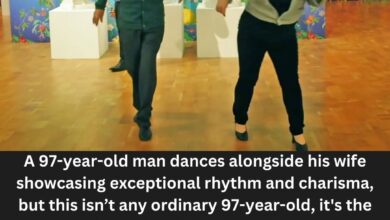Everyone Knew This 1950s Dance, Can You Remember It Today
In February 1958, “The Stroll” emerged as a dance craze that quickly captured the imagination of American teenagers, becoming a defining feature of high school social life. This lively line dance, which took hold at gymnasium dances and sock hops, embodied the vibrant energy of the rock ‘n’ roll era. Originating from African American communities, “The Stroll” gained widespread popularity thanks to television exposure, particularly on Dick Clark’s “American Bandstand,” which showcased the dance to a national audience and inspired teenagers across the country to join in the fun.
“The Stroll” was more than a simple dance; it became a cultural icon reflecting the era’s social dynamics. Participants formed two lines facing each other, creating a central aisle. Couples would take turns walking down this aisle, performing the dance steps in sync with the music, often adding their personal flair. This format allowed for both collective participation and individual expression, resonating with the youth who were exploring their identities within the changing social landscape of the 1950s.
The dance was set to the tune of “The Stroll,” a hit song by The Diamonds, a Canadian doo-wop group renowned for their smooth vocal harmonies. The Diamonds’ rendition of “The Stroll” was more than a popular track; it became the anthem of the dance craze, perfectly capturing the era’s spirit. Lead singer Dave Somerville’s deep baritone voice added a touch of charm and sophistication, becoming synonymous with the dance’s infectious rhythm and enthusiasm.
As the dance gained momentum, it quickly became a fixture at social events across the United States. Its appeal transcended racial and social barriers, offering a unifying experience at a time when the country was grappling with segregation. The simplicity of “The Stroll” made it accessible to a wide audience, while its energetic and upbeat nature made it a favorite among teenagers eager to participate in the latest trend.
The widespread embrace of “The Stroll” marked a significant moment in American pop culture, illustrating the power of music and dance to bring people together. Teenagers, dressed in their best attire, would eagerly take their turn to showcase their moves, reflecting the optimism and dynamism of post-war America. The dance became a symbol of youthful exuberance, capturing the essence of a generation on the cusp of major cultural shifts.
Even as trends evolved and new dances emerged, “The Stroll” left a lasting legacy in the history of American dance. Its impact was felt not only through its immediate popularity but also in its role as a precursor to future dance crazes. The joyful and inclusive spirit of “The Stroll” continued to influence the dance culture of subsequent decades, cementing its place in the annals of American social history.



